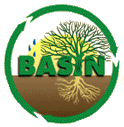
Mark Losleben - CU INSTAAR Research Staff
 |
|
Mark Losleben - CU INSTAAR Research Staff |
The following snowpack conditions on Niwot Ridge have been reported by Mark Losleben for June, 2003. Select here for more information about these snowpack reports
Greetings!
The last of the snow very rapidly disapeared from the Snotel pillow at C1, Niwot Ridge on May 29, 2003. This departure was hastened by the very hot weather of this week.
What a difference one week can make! Last week ice was coating everything at C1, and the snowpack appeared to have stopped melting. This week, it was melting at a rate of feet per day. The streams are over bank full, and soon there will be no more snow to melt. The ground is drying quickly in many places, suggesting if this weather continues, we will be relying upon summer convective storms to keep the soil moist and the vegetation green.
The table at the end of this message, courtesy of Tim Bardsley, Snow Hydrologist, NRCS, Salt Lake City, provides an historical perspective of meltout dates, as well as a prediction of this years date, which might have been exactly correct if temperatures had not become so extremely high.
Since 1981, the 2003 SWE of 15.8 inches was 8th highest compared to a mean of 14.3 inches. It took 51 days to melt out, from peak accumulation date, compared to an average of 40 days, and meltout was 15 days earlier than average.
The hot weather of this week took its toll on the snowpack in the S Platte basin as well, knocking it from first to second place in the state, but just barely. The Laramie/N Platte basin ranks first with 89% of average SWE (the S Platte has 85% on May 29th).
The Upper Rio Grande is still at the bottom, with esentially no snowpack left at the Snotel measuring sites, and the San Juan, Dolores, San Miguel, Animas basins rank second to lowest with 15% of average SWE.
The cummulative winter precipitation percentages are much higher in all these locations, indicating there is much less water sequestered in the snowpack than average (the SWE/PPT ratio is less than one) at this time.
In the western US, snowpacks are lowest, and well below average in Alaska, Arizona, and New Mexico, but winter precipitation is much closer to average. Snowpack is at or above average, and SWE/PPT ratios near or greater than one, in California, Idaho, Montana, and Nevada. The remainder of the states rank in between.
So, until next snow season, let us hope for plentiful summer rains to maintain any gains in the recovery from drought that this winter has brought many, but not all, areas.
Cheers! Mark
Prediction of SWE Melt Rate for NIWOT - Using Linear Regression of Historic Data
Water Peak SWE Peak Date Melt-Out Date # of Days Melt Rate Peak Day (1=Oct1)
Year
2003 15.8 04/08/03 06/02/03* 55* 0.29 190*
2002 7.0 03/28/02 05/01/02 34 0.21 179
2001 9.8 04/24/01 05/24/01 30 0.33 206
2000 12.5 04/05/00 05/17/00 42 0.30 188
1999 14.7 05/04/99 06/05/99 32 0.46 216
1998 15.2 04/29/98 06/03/98 35 0.43 211
1997 20.4 05/03/97 06/18/97 46 0.44 215
1996 20.6 04/08/96 05/23/96 45 0.46 191
1995 18.1 05/31/95 06/24/95 24 0.75 243
1994 15.5 04/16/94 05/25/94 39 0.40 198
1993 15.9 04/21/93 05/28/93 37 0.43 203
1992 12.6 04/01/92 05/16/92 45 0.28 184
1991 9.4 04/01/91 05/29/91 58 0.16 183
1990 15.3 04/14/90 06/04/90 51 0.30 196
1989 10.8 04/13/89 05/21/89 38 0.28 195
1988 14.0 03/31/88 05/27/88 57 0.25 183
1987 11.9 04/14/87 05/18/87 34 0.35 196
1986 16.8 04/19/86 06/04/86 46 0.37 201
1985 10.9 04/06/85 05/23/85 47 0.23 188
1984 21.1 05/08/84 06/02/84 25 0.84 221
1983 18.3 05/21/83 06/24/83 34 0.54 233
1982 15.1 04/16/82 06/11/82 56 0.27 198
1981 7.6 04/09/81 05/09/81 30 0.25 191
* = predicted